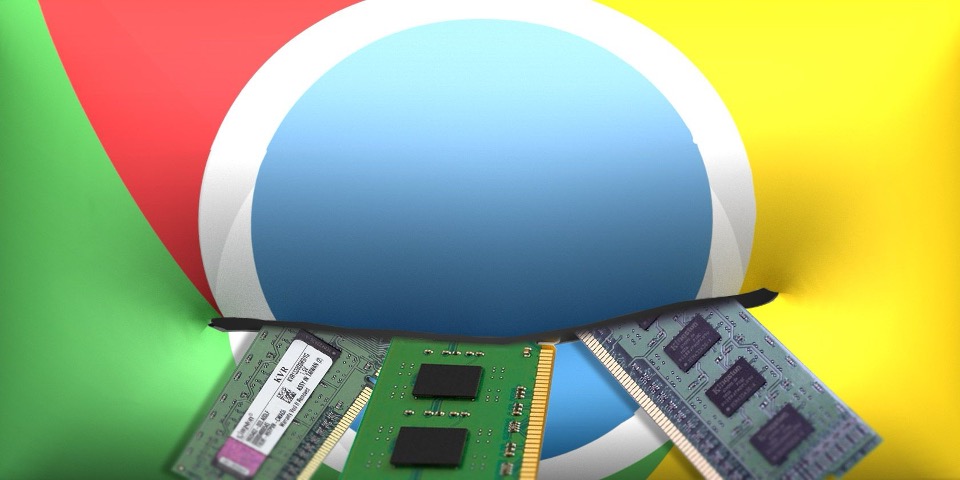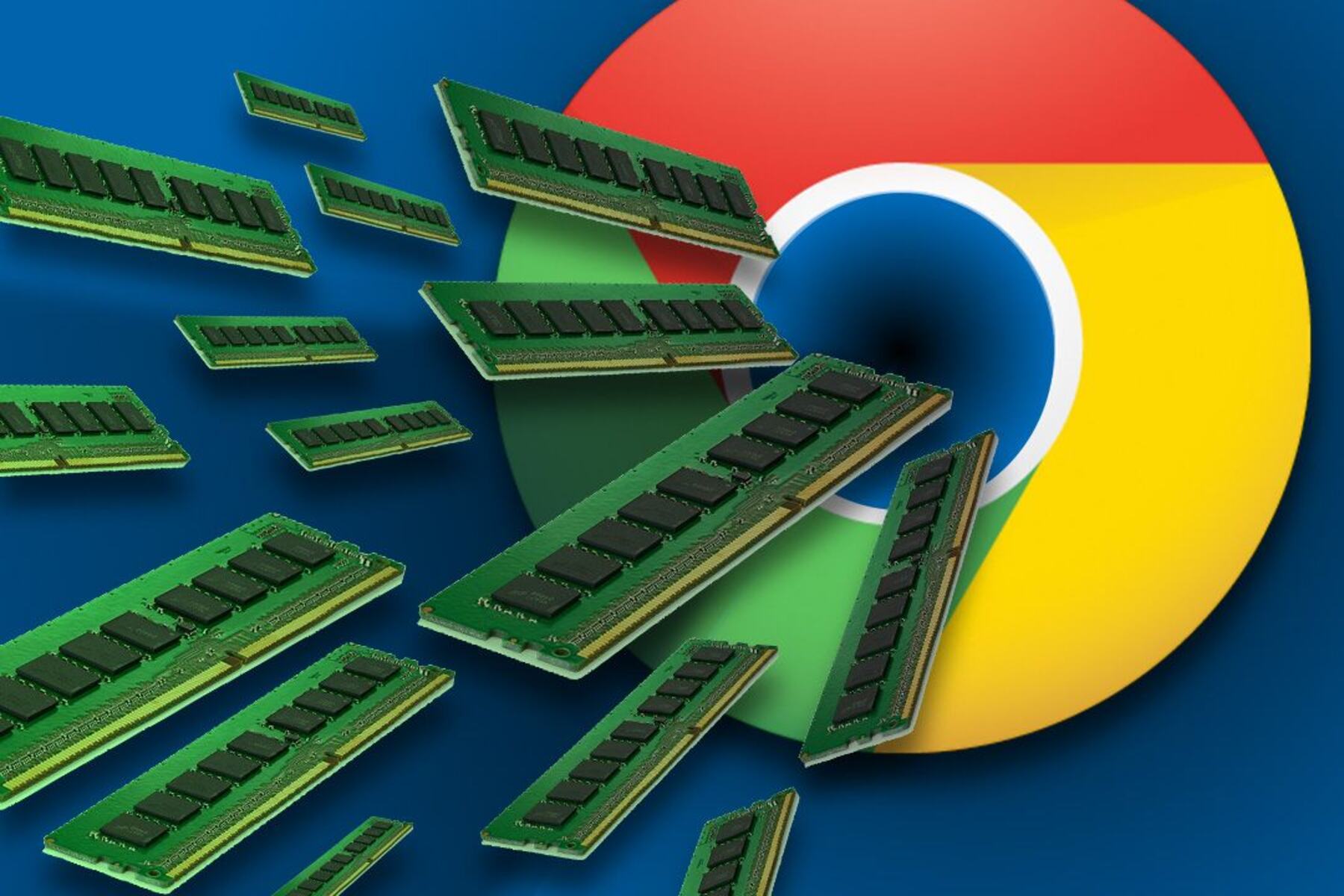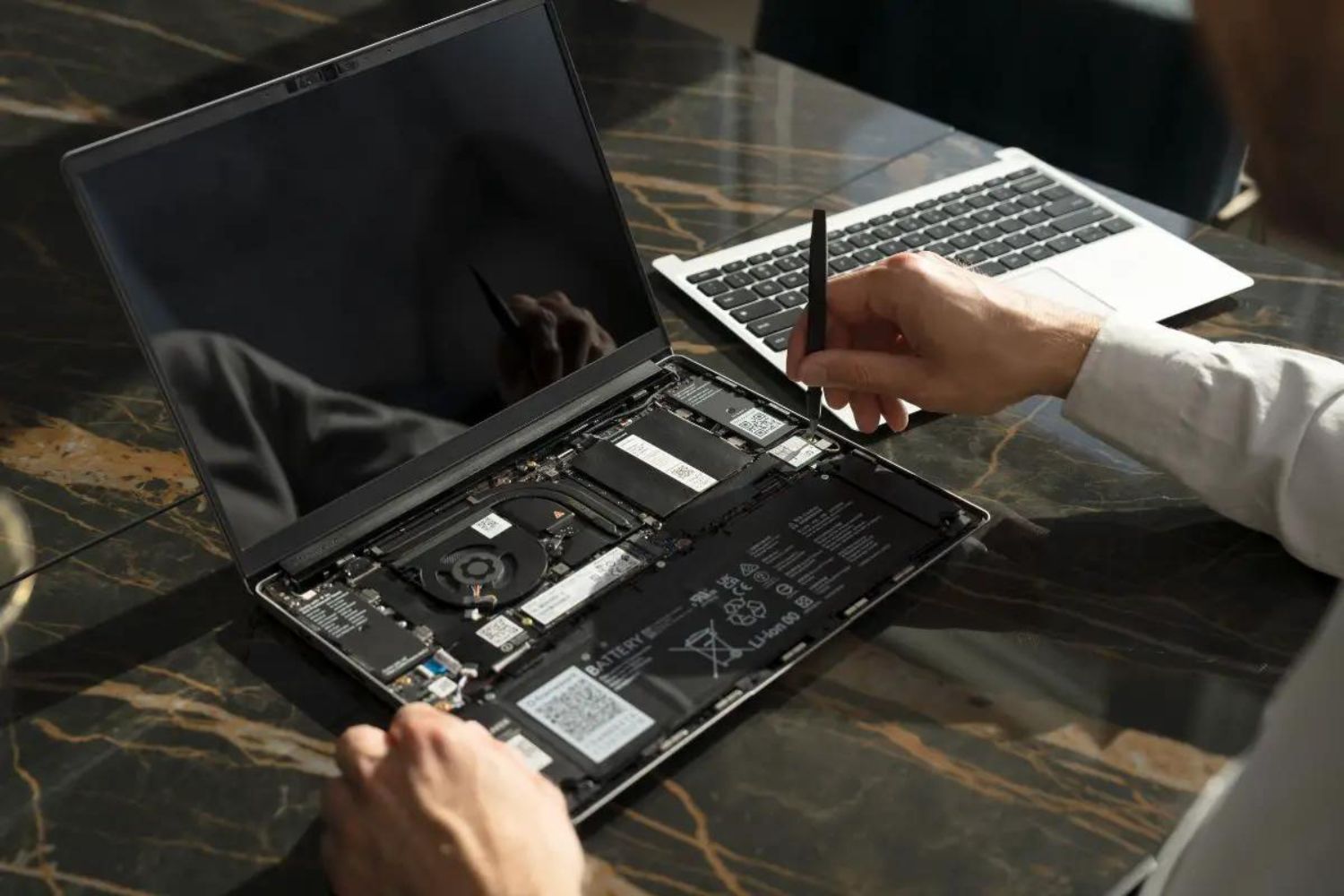Introduction
Welcome to the world of web browsing, where speed and efficiency are key. However, if you’re a frequent user of the popular web browser Google Chrome, you may have noticed that it tends to consume a significant amount of your computer’s memory, particularly RAM. This tendency has left many users wondering why Chrome uses so much RAM and how it affects their browsing experience.
RAM, short for Random Access Memory, is a critical component of any computer system. It acts as the temporary storage for data and programs that are currently being used. The more RAM your computer has, the more efficiently it can handle multitasking and running resource-intensive applications.
When it comes to web browsing, Chrome has gained a reputation for being a memory hog. Compared to other browsers, such as Firefox or Safari, Chrome tends to use a higher amount of RAM by default. This can lead to slower performance, increased system resource usage, and even system crashes in extreme cases. So, why is Chrome so hungry for RAM?
Several factors contribute to Chrome’s RAM usage. One significant factor is the browser’s design philosophy, which prioritizes speed and responsiveness. Chrome uses a multiprocess architecture, where each tab and extension runs in its own separate process. This design allows for better stability and security since crashes or issues with a single tab or extension won’t affect the entire browser. However, this also means that each process requires its own chunk of memory, resulting in more significant overall RAM consumption.
Another factor contributing to Chrome’s RAM usage is its extensive support for browser extensions and plugins. While these add-ons provide additional functionality and customization options, they also consume memory resources. Each active extension or plugin contributes to the total RAM usage, especially if they continuously run in the background or require frequent updates.
Furthermore, the number of open tabs and the complexity of web pages can significantly impact Chrome’s RAM usage. Each tab requires memory to store its contents and scripts, and complicated web pages with rich media or interactive elements can further increase the memory footprint. Opening multiple tabs simultaneously or leaving them open for a long time can quickly accumulate RAM usage.
Lastly, memory leaks can contribute to Chrome’s high RAM consumption. A memory leak occurs when an application fails to release memory that is no longer needed. Over time, these unreleased memory blocks can accumulate, leading to increased RAM usage and eventual performance degradation. While Chrome has implemented measures to mitigate memory leaks, certain extensions or poorly optimized websites can still cause memory allocation issues.
Understanding the factors that contribute to Chrome’s RAM usage is essential, especially for users who want to optimize their browsing experience. In the next sections, we will explore techniques and tips to reduce Chrome’s RAM usage without sacrificing performance or functionality. So, let’s dive in and discover how to take control of your browsing experience with Chrome.
What is RAM?
Before delving into why Chrome uses so much RAM, let’s first understand what RAM actually is. RAM, or Random Access Memory, is a hardware component that plays a crucial role in the performance and functionality of any computer system.
RAM is essentially a temporary storage area where data and instructions are stored while the computer is running. Unlike the long-term storage provided by hard drives or solid-state drives, RAM is volatile, meaning its contents are cleared when the computer is powered off or restarted.
The main purpose of RAM is to serve as a high-speed working memory for the computer. It allows the processor to quickly access and manipulate data that is currently in use. The more RAM a computer has, the more efficiently it can handle multiple tasks and run resource-intensive applications.
When you open a program or a web browser like Chrome, the necessary data and instructions are loaded from the hard drive into RAM. This allows the processor to access and process the information much faster than it would if it had to retrieve everything directly from the hard drive. As a result, having an adequate amount of RAM is crucial for ensuring smooth and responsive performance.
RAM is organized into memory cells, each capable of holding a certain amount of data. These cells are identified by unique addresses, allowing the processor to access specific information quickly. The size of RAM is typically measured in gigabytes (GB), with modern computers often having several gigabytes or even terabytes of RAM.
In the context of web browsing, RAM plays a vital role in storing and rendering web pages, running browser extensions, and handling other browser-related processes. Every tab that you open in Chrome requires a certain amount of memory to store its contents. This includes the HTML, CSS, and JavaScript code that make up the web page, as well as any media files such as images or videos.
Additionally, extensions and plugins installed in Chrome also consume memory resources. These add-ons provide additional functionality and customization options, but they require memory to run their features and maintain their state. The more extensions and plugins you have active, the more memory Chrome will need to allocate to support them.
Now that we have a solid understanding of what RAM is and its significance in computer systems and web browsing, we can explore how Chrome utilizes RAM and why it often ends up consuming a significant amount.
How does Chrome use RAM?
As one of the most popular web browsers, Google Chrome is renowned for its speed and powerful features. However, this efficiency comes at the cost of higher RAM usage compared to other browsers. Understanding how Chrome uses RAM can provide insights into why it consumes so much memory and how it affects your browsing experience.
Chrome utilizes a unique architecture called the multiprocess model, which is one of the key contributors to its RAM usage. Unlike traditional browsers that operate on a single process, Chrome runs each tab and extension in a separate process. This approach offers improved stability and security since a crash or problem with one tab or extension doesn’t affect the entire browser. However, it also means that Chrome needs to allocate memory for each individual process, leading to higher overall RAM consumption.
Another factor influencing Chrome’s RAM usage is its aggressive preloading feature. To provide a seamless browsing experience, Chrome proactively loads and caches web pages, scripts, and resources in the background. This reduces the delay when switching between tabs or opening new ones, but it results in additional memory usage to store these preloaded components.
Extensions and plugins also contribute significantly to Chrome’s RAM consumption. While these add-ons provide valuable functionality and customization options, they require memory resources to execute their features and maintain their state. Active extensions that continuously run in the background or perform regular updates can contribute to the memory burden of Chrome.
Furthermore, each tab in Chrome consumes memory to store its contents. This includes HTML, CSS, JavaScript, and any media files associated with the web page. Complex web pages with rich multimedia content or interactive elements can further increase the memory footprint of a tab.
Chrome also employs a process known as sandboxing to enhance security. Each tab and extension is isolated within its own sandboxed process, preventing potential security threats from spreading to other parts of the browser or the underlying operating system. While this added layer of security is beneficial, it requires additional memory allocation for each sandboxed process.
It’s worth mentioning that Chrome’s RAM usage is adaptive and dynamic. The browser attempts to optimize memory allocation based on your system resources and the browsing activities. If your system runs low on available RAM, Chrome may reduce its memory usage by discarding certain tabs or processes that are not actively in use.
Understanding how Chrome uses RAM allows you to make informed decisions about managing its memory consumption. In the following sections, we will explore various factors and techniques that can help reduce Chrome’s RAM usage without compromising its performance or functionality.
Factors that contribute to Chrome’s RAM usage
Chrome’s reputation for being a memory-intensive browser stems from several factors that contribute to its RAM usage. By understanding these factors, you can gain insight into why Chrome consumes a significant amount of memory and take steps to manage its resource usage effectively.
1. Multiprocess architecture: Chrome’s multiprocess architecture, where each tab and extension runs in a separate process, is one of the primary reasons for its higher RAM usage. While this architecture enhances stability and security, it requires allocating memory for each individual process, resulting in increased overall RAM consumption.
2. Extension and plugin usage: Chrome’s extensive support for extensions and plugins is one of its key strengths, allowing users to customize and enhance their browsing experience. However, each active extension or plugin consumes memory resources to run its features and maintain its state. The more extensions and plugins you have installed and active, the more RAM Chrome will require to support them.
3. Open tabs and processes: Opening multiple tabs simultaneously or keeping a large number of tabs open for a long time can significantly contribute to Chrome’s RAM usage. Each tab requires memory to store its contents, including the web page’s code, images, and other media files. The more tabs you have open, the more RAM Chrome needs to allocate for them.
4. Memory leaks: Despite Chrome’s efforts to mitigate memory leaks, certain extensions or poorly optimized websites can still cause memory allocation issues. Memory leaks occur when an application fails to release memory that is no longer needed, leading to increased RAM usage over time. While Chrome tries to free up memory when it’s running low, memory leaks can still impact its overall resource consumption.
5. Resource-demanding web pages: Viewing complex web pages that contain rich media content, dynamic elements, or resource-intensive scripts can significantly increase Chrome’s RAM usage. These pages require more memory to render and execute, especially if they continuously load new content or animations in the background.
6. Background processes and services: Chrome runs several background processes and services to perform tasks like syncing bookmarks, checking for updates, or running push notifications. While these processes are essential for Chrome’s functionality, they contribute to its RAM usage. Disabling unnecessary background services can help reduce Chrome’s memory footprint.
7. Browser settings and flags: Certain Chrome settings and experimental flags can affect its RAM usage. For example, enabling hardware acceleration or adjusting the number of simultaneous downloads can impact resource consumption. Reviewing and fine-tuning these settings can help optimize Chrome’s RAM usage based on your specific requirements.
By being aware of these factors, you can take proactive steps to manage Chrome’s RAM usage effectively. In the next section, we will explore techniques and strategies to reduce Chrome’s RAM consumption without compromising its performance.
Extensions and plugins
One of the defining features of Google Chrome is its extensive support for extensions and plugins, which can enhance functionality and customize the browsing experience. However, the use of extensions and plugins can contribute significantly to Chrome’s RAM usage. Understanding how these add-ons affect memory consumption can help you optimize Chrome’s performance.
Extensions: Chrome extensions are small software programs that add specific features or functionality to the browser. They can range from ad blockers and password managers to productivity tools and social media integrations. While these extensions offer valuable features, each active extension consumes memory resources. The more extensions you have installed and enabled, the more memory Chrome will need to allocate to support them.
To manage extension-related memory usage:
- Disable or remove unnecessary extensions: Periodically review your installed extensions and disable or remove any that you no longer use or need. This can help reduce Chrome’s RAM usage and streamline your browsing experience.
- Use extension alternatives: Instead of relying on multiple extensions that perform similar functions, consider using a single, comprehensive extension that offers multiple features. This can help reduce the overall number of active extensions and, by extension, lower memory consumption.
- Check for memory-efficient extensions: Some extensions are designed to be lightweight and minimize their impact on memory usage. When selecting extensions, consider checking user reviews or looking for recommendations that highlight efficiency.
Plugins: Plugins are external software modules that provide additional functionality to web browsers. Common plugins include Adobe Flash Player, PDF readers, and multimedia players. Like extensions, plugins also consume memory resources. However, Chrome’s built-in Flash Player (Pepper Flash) operates as a plugin within a sandboxed process to enhance security and mitigate memory-related issues.
To manage plugin-related memory usage:
- Keep plugins up to date: Regularly update plugins to ensure you are using the latest versions, which often include performance improvements and bug fixes. Outdated plugins may consume extra memory or pose security risks.
- Disable or remove unnecessary plugins: If you no longer need certain plugins, such as Java or Silverlight, consider disabling or removing them from Chrome. This can reduce both memory usage and potential security vulnerabilities.
- Enable ‘Click to Play’ for plugins: By enabling the ‘Click to Play’ feature in Chrome’s settings, plugins will only run if you explicitly click on them. This can prevent unnecessary plugin activity and reduce overall memory consumption.
Remember to strike a balance between the functionality offered by extensions and plugins and their impact on Chrome’s memory usage. By carefully managing and optimizing the usage of these add-ons, you can maintain a smooth and efficient browsing experience while minimizing RAM consumption.
Open tabs and processes
Having multiple tabs open simultaneously is a common practice for users who need to switch between different websites or tasks quickly. However, each open tab in Chrome requires memory to store its contents, contributing to the browser’s overall RAM usage. Understanding how open tabs and processes impact memory consumption can help you optimize Chrome’s performance.
Impact of open tabs: The more tabs you have open in Chrome, the more memory the browser needs to allocate to store their contents. Each tab consists of HTML, CSS, JavaScript, and media files associated with the web page. Complex web pages with rich media content or interactive elements can significantly increase the memory footprint of a tab.
To manage open tabs and reduce memory usage:
- Close unnecessary tabs: Periodically review your open tabs and close any that you no longer need. This can free up memory and improve overall system performance.
- Use tab management extensions: Consider using extensions specifically designed to manage and organize your tabs efficiently. These extensions can help you group tabs, suspend inactive tabs, or save tab sessions for later use—all of which can reduce memory usage.
- Utilize bookmarks and reading lists: Instead of leaving tabs open indefinitely, bookmark the pages you want to revisit later or add them to the browser’s reading list. This approach allows you to free up memory by closing unnecessary tabs while still keeping easy access to important websites or articles.
Impact of processes: Chrome’s multiprocess architecture assigns each tab and extension a separate process, enhancing stability and security. However, this design also increases the browser’s overall memory usage since each process requires its own memory allocation.
To manage processes and reduce memory usage:
- Identify memory-intensive processes: Use Chrome’s built-in Task Manager (accessed by pressing Shift + Esc) to identify which tabs or extensions use the most memory. By identifying memory-intensive processes, you can decide whether to close or disable them to free up memory.
- Limit excessive background processes: Chrome runs several background processes and services to perform tasks like syncing bookmarks, checking for updates, or running push notifications. Consider disabling or limiting unnecessary background processes in Chrome’s settings to free up system resources.
- Use extensions for process management: Certain extensions can help manage Chrome’s processes by allowing you to limit the number of processes or adjusting their memory allocation. These extensions offer more control over Chrome’s resource usage, helping to reduce unnecessary memory consumption.
By being mindful of the number of open tabs and managing Chrome’s processes effectively, you can optimize the browser’s memory usage. This not only helps improve performance but also allows your system to allocate resources more efficiently for other tasks.
Memory leaks
Memory leaks can occur in any software program, including web browsers like Chrome. A memory leak happens when an application fails to release memory that is no longer needed, resulting in increased RAM usage over time. While Chrome has implemented measures to mitigate memory leaks, certain extensions or poorly optimized websites can still cause memory allocation issues.
Here are some factors related to memory leaks in Chrome:
- Extensions and plugins: Some extensions or plugins may have memory leaks or inefficient memory management. These add-ons can unknowingly consume more memory than necessary, leading to increased RAM usage in Chrome. Keeping extensions and plugins updated to their latest versions can help minimize the risk of memory leaks.
- Poorly optimized websites: Certain websites may have coding errors, inefficient scripts, or excessive use of memory resources, leading to memory leaks in Chrome. When visiting such websites, the browser may exhibit increased RAM usage. Clearing the cache and reloading the page can help mitigate memory leaks caused by poorly optimized web content.
- Long browsing sessions: The longer you keep Chrome open, the greater the chances of memory leaks accumulating. Even with well-optimized extensions and websites, extended browsing sessions can gradually increase RAM usage. Restarting the browser after prolonged use can help free up memory and reset any potential memory leaks.
- Outdated browser versions: Older versions of Chrome may have known memory leak issues that have been addressed in subsequent updates. Updating Chrome regularly to the latest stable version can help reduce the risk of memory leaks caused by outdated software.
While Google continuously works to improve Chrome’s memory management and minimize potential memory leaks, it is essential for users to be aware of the factors that can contribute to increased memory usage. If you notice a significant increase in Chrome’s RAM usage or performance issues, it may be helpful to troubleshoot by disabling or uninstalling specific extensions or plugins.
Regularly reviewing and optimizing your browsing habits, such as closing unnecessary tabs, managing extensions, and keeping a balanced number of active sessions open, can also help prevent the accumulation of memory leaks and maintain efficient memory usage in Chrome.
By understanding the potential causes of memory leaks and taking necessary precautions, you can minimize the impact of memory leaks on Chrome’s RAM usage and enjoy a smoother browsing experience.
How to reduce Chrome’s RAM usage
If you’re looking to optimize Chrome’s performance and reduce its RAM usage, there are several techniques and strategies you can employ. By following these suggestions, you can enjoy a more efficient browsing experience without sacrificing functionality.
1. Remove or disable unnecessary extensions and plugins: Periodically review your installed extensions and plugins and remove any that you no longer use or need. Disabling unnecessary add-ons can help reduce Chrome’s RAM usage.
2. Use browser tabs more efficiently: Avoid opening an excessive number of tabs simultaneously. Instead, bookmark pages you want to revisit and close tabs that are no longer needed. This helps to reduce the overall memory footprint of Chrome.
3. Utilize tab management extensions: Install extensions specifically designed to manage and optimize your tabs. These extensions can help suspend inactive tabs, save tab sessions, or group related tabs together, reducing the memory impact of having multiple tabs open.
4. Enable ‘Click to Play’ for plugins: Configure Chrome to require you to click on plugins before they run. This prevents memory-intensive plugins from automatically loading and reduces overall memory usage.
5. Keep Chrome and extensions up to date: Regularly update Chrome and its extensions to ensure you have the latest versions, which often include performance optimizations and bug fixes that can help reduce memory usage.
6. Limit the number of open applications: Running multiple memory-intensive applications alongside Chrome can strain your system’s resources. Consider closing unnecessary applications to free up memory for Chrome to utilize.
7. Adjust Chrome settings: Chrome offers settings that can help optimize memory usage. For example, you can adjust the number of images that are loaded on a web page or enable the ‘Predict network actions’ option, which prefetches pages as you type in the address bar to reduce loading times.
8. Clear browsing data: Regularly clear your browsing history, cache, and cookies. Accumulated data can increase Chrome’s RAM usage over time, and clearing it can free up memory and improve performance.
9. Use the Task Manager: Chrome has a built-in Task Manager that allows you to monitor and manage individual tabs and extensions. Use it to identify memory-intensive processes and selectively close or disable them to reduce memory usage.
10. Restart Chrome periodically: If you notice a gradual increase in Chrome’s RAM usage, restarting the browser can help free up memory and reset any potential memory leaks that may have accumulated during extended browsing sessions.
By implementing these techniques, you can effectively reduce Chrome’s RAM usage and ensure a more efficient browsing experience. Experiment with different strategies and find the best combination that works for you and your specific browsing habits.
Conclusion
Google Chrome’s reputation as a fast and feature-rich web browser comes with the trade-off of relatively high RAM usage. Understanding how Chrome uses memory and the factors that contribute to its RAM consumption can help you optimize its performance and ensure a smoother browsing experience.
RAM, or Random Access Memory, is a critical component of any computer system and plays a crucial role in the performance of web browsers. Chrome’s multiprocess architecture, extensive support for extensions and plugins, the number of open tabs and processes, memory leaks, and resource-demanding web pages all contribute to its RAM usage.
However, there are several strategies you can employ to reduce Chrome’s RAM usage:
- Removing or disabling unnecessary extensions and plugins.
- Using browser tabs more efficiently and employing tab management extensions.
- Enabling ‘Click to Play’ for plugins and keeping Chrome and its extensions up to date.
- Limiting the number of open applications and adjusting Chrome settings.
- Clearing browsing data and utilizing the Task Manager.
- Restarting Chrome periodically to free up memory.
By implementing these techniques, you can strike a balance between Chrome’s functionality and its RAM usage, ensuring optimal performance and responsiveness. Regular maintenance and optimization of Chrome’s memory resources will enhance your overall browsing experience and prevent potential performance issues.
Remember, the goal is to optimize Chrome’s memory usage without compromising its functionality or your browsing needs. Tailor your approach based on your specific requirements and habits. Experiment with different techniques and monitor the impact on RAM usage to find the best strategy for your own usage patterns.
By managing Chrome’s RAM usage efficiently, you can enjoy the benefits of a fast and reliable browser while ensuring that your computer’s resources are used optimally.

























